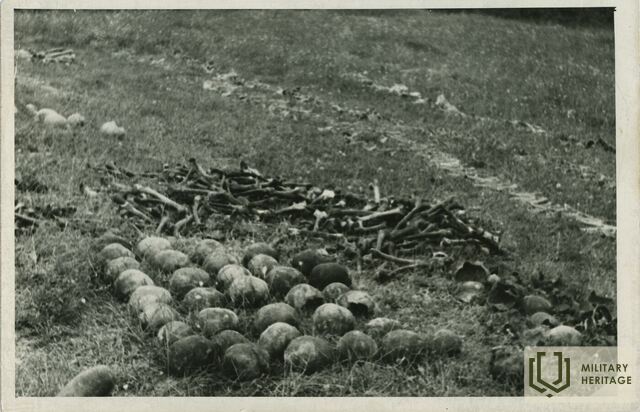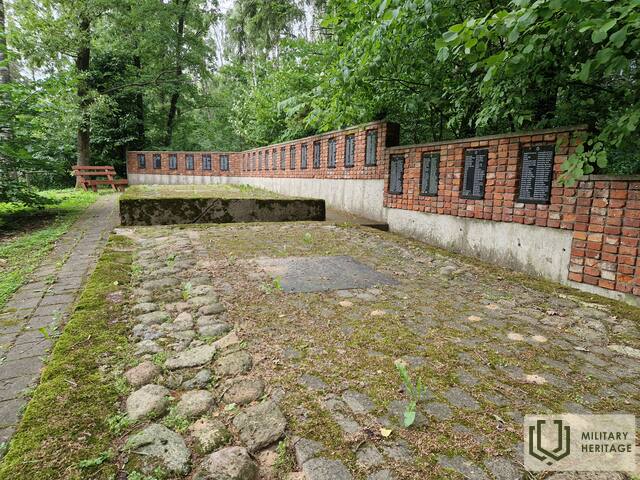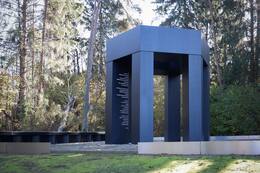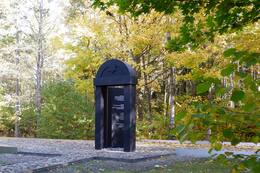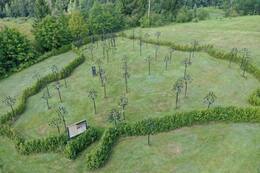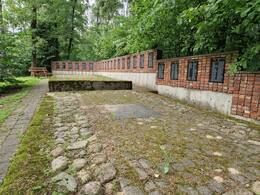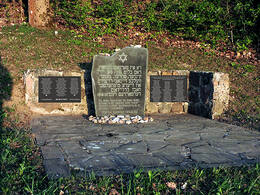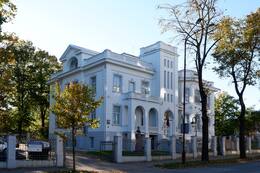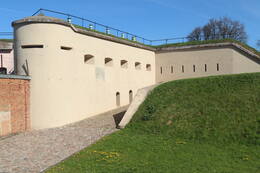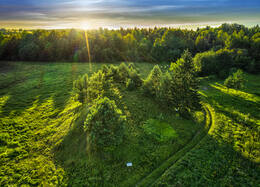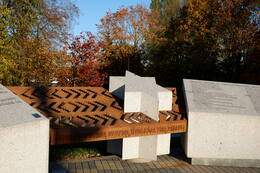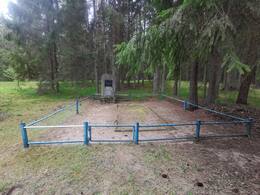The Holocaust in Lithuania
Before the Nazi occupation, the Lithuanian Jewish community, famous for its culture and history, numbered 208-210 thousand people. When the USSR-Germany war began, only a small part (8-9 thousand) managed to retreat to the depths of the Soviet Union. The Nazis, taking advantage of the anti-communist sentiments caused by the Soviet occupation, successfully spread anti-Semitic propaganda.
The course of the Holocaust in Lithuania can be divided into three distinct stages. The first (late June 1941–November) was the most brutal – about 80% of Lithuanian Jews were destroyed during it. The second (December 1941–March 1943) is called the stabilization period, when Jews were intensively exploited for forced labor. The third stage (April 1943–July 1944) became the systematic liquidation of ghettos, sending able-bodied people to concentration camps and unfit people to death camps.
The beginning of the Holocaust was extremely brutal. On June 24, 1941, the Tilsit Gestapo and Klaipėda police officers committed the first mass murders in Gargždai. On June 25, the operational group A led by W. Stahlecker arrived in Kaunas and began organizing systematic extermination. After disarming the Lithuanian rebel groups, the National Labor Protection (TDA) battalion was established, which, together with the Gestapo, carried out massacres in the Kaunas forts.
In early July, the 3/A operational unit led by K. Jäger took control and began a methodical extermination process. About 3 thousand Jews were killed in Kaunas Fort VII over two days. At the same time, the isolation of Jews began - the mayors of Kaunas and Vilnius ordered the establishment of ghettos. Two ghettos were established in Vilnius: the Big Ghetto housed 30 thousand people, the Small Ghetto – 9-11 thousand people. The Small Ghetto was liquidated already in October 1941.
The killing mechanism worked precisely: a mobile unit led by J. Hamann, Lithuanian police battalions, an SD special unit and local collaborators carried out mass actions throughout Lithuania. The culmination was the action on Kaunas Fort IX on October 29, 1941, when 9,200 Jews were killed in one day, including 4,273 children.
By the end of 1941, the provincial Jewish communities were almost completely destroyed, with only 3-5% surviving. The working Jews remained only in the large ghettos, where the so-called "stabilization" period took place in 1941-1943. They worked for the needs of the Wehrmacht in factories, workshops, and peat bogs. The ghetto administration, led by Jewish councils (Judenrats), desperately tried to prove the usefulness of Jewish labor, hoping to avoid extermination.
In June 1943, H. Himmler ordered the final liquidation of the Ostland ghettos. The process began with smaller ghettos in eastern Lithuania. In September, the Vilnius ghetto was liquidated: 11 thousand able-bodied people were sent to camps in Estonia and Latvia, 3.5 thousand elderly people, children and the disabled were sent to death camps in Poland. In July 1944, as the front approached, the Kaunas and Šiauliai ghettos were set on fire and destroyed, and the prisoners were taken to Dachau and Stuthof.
During the three years of occupation, 195-200 thousand Lithuanian Jews were destroyed - 90-95% of the community. This percentage was one of the highest in occupied Europe. However, in the darkest days of the Holocaust, the light of humanity also shone - about 25 thousand Lithuanians joined a secret Jewish rescue network. Their efforts saved 2,500-4,000 Jews. The clergy played a particularly significant role: despite the official ban of the church, more than 160 priests saved Jews. Rescue required extraordinary courage and coordinated actions - often a network of several people was needed to save one family. Rescuers risked their own lives and the lives of their loved ones, so many of the facts of their activities only became clear after the war. Fourteen Lithuanian priests were awarded the title of Righteous Among the Nations for their sacrifice. In 1990. independent Lithuania officially recognized this historical crime by adopting a special statement of the Supreme Council.
More information sources
Related timeline
Related objects
The Lost Shtetl - Šeduva Jewish History Museum
The Šeduva Jewish History Museum "The Lost Shtetl" is a museum of the history of Jewish towns that has been being built with private funds in Šeduva, Radviliškis district, since 2015. Scientists from different countries are working on the concept.
The museum, dedicated to the Lithuanian Jewish community and the perpetuation of their cultural heritage, is scheduled to open in August 2025. The word “shtetl” means a town where Jews lived before World War II. Šeduva was one of the places where the Jewish community flourished with its unique traditions, crafts, and religious life.
The aim of this modern museum is to introduce visitors to the life of Jews in Lithuania and their tragic fate during the Holocaust. Through interactive exhibits and technologies, the museum will allow visitors to see and experience how Jews lived in Lithuanian towns, what their daily lives were like, their holidays and religious traditions. It will display authentic objects, documents, photographs and audio and video recordings reflecting the life of Jewish communities at that time.
"The Lost Shtetl" will remind us of the tragedy that the Jews experienced during World War II. During the Holocaust, the Jewish communities of Lithuania were almost destroyed, and the museum seeks to preserve this painful history for future generations, promoting memory and empathy among visitors. In addition, the museum complex includes a restored Jewish cemetery and monuments dedicated to the memory of the Jewish community of Šeduva.
The Lost Shtetl Museum is an important place of memory, education, and reconciliation, striving to preserve the traces of Lithuanian Jewish culture and history.
Jewish Holocaust site in Šeduva, Pakuteniai Village
One of the three Holocaust sites of the Jews of Šeduva is located in Pakuteniai Forest (Radviliškis district), about eight kilometres south-east of Šeduva, on a gravel road.
In August 1941, 27 Jews were murdered here, including the last rabbi of Šeduva, Mordechai David Henkin. In two other places, approximately 700 people were killed in Liaudiškiai Forest. On 25 June 1941, the Nazis occupied Šeduva, and at the beginning of July, the Jews of the town were forcibly evicted from their homes and driven to the neighbouring village of Pavartyčiai, where a ghetto was established. On 25–26 August, a small part of the captured were shot in Pakuteniai forest, and the rest – in Liaudiškiai Forest.
From 2014–2015, pursuant to the initiative of the Jewish Memorial Foundation of Šeduva, the sites of these murders were cleaned up and made accessible to visitors. The monument “Home of the Star of Light”, by sculptor Romas Kvintas, is erected on the site of the murder of the Jews of the village of Pakuteniai
The site of the First and Second Jewish Holocaust in Šeduva
The sites of the First and Second Jewish Holocaust in Šeduva are located in Liaudiškiai Forest (Radviliškis district), about 10 km south of Šeduva. A direction sign has been installed next to the gravel road.
The first Jewish burial site covers an area of 375 m² and is mostly paved and surrounded by forest. Approximately 400 people were murdered and buried there. The second burial site is located about 500 m away. The remains of Jews are buried in an area of 144 m². The site is flat and most of it is paved. Approximately 300 people were murdered and buried there.
In 1941, the entire Jewish community of Šeduva – almost 700 people – were murdered at these two sites. A month before their deaths, they were still held in the ghetto set up in the village of Pavartyčiai. On 25 and 26 August, the inhabitants of the ghetto were taken to Liaudiškiai Forest. The people were taken to a dug-out pit and killed by local policemen and hired help on the orders of the Germans. Among those killed were 230 men, 275 women and 159 children.
From 2014–2015, pursuant to the initiative of the Jewish Memorial Foundation of Šeduva, the sites of these murders were cleaned up and made accessible to visitors. Two statues by sculptor Romas Kvintas are erected at the sites of the mass killings: “The Door” and “Ray – Star”.
Litvak Memorial Garden
In 2014, the Jacob Bunka Charity and Support Foundation established the Litvak (Lithuanian Jew) Memorial Garden in Žemaitija National Park, approximately two kilometres from the centre of Plateliai, in the village of Medsėdžiai. It is a monument dedicated to the eliminated Jewish communities of Lithuania. The garden reproduces the contours of Lithuania, while the sites where Jewish communities were eliminated in 1941–1944 are marked with wrought-iron apple trees. The author of the carved apple trees is Artūras Platakis. The apples in the trees signify families that have lived in these communities. Litvaks from around the globe can participate in the development of the garden by ordering new apple trees and apples in memory of their ancestors. The garden also features pillars made of Karelian granite that individually celebrate the achievements of Litvaks worldwide.
In 2016, the initiative was extended to include the Litvaks, who lived throughout the territory of the Grand Duchy of Lithuania, and the rescuers of Jews during the Holocaust. A billboard at the entrance to the garden tells the story of former Jewish communities throughout Lithuania.
Currently, apple trees to commemorate the Jewish communities of Alytus, Alsėdžiai, Kalvarija, Mosėdis, Plateliai, Plungė, Telšiai, Vabalninkas, Viekšniai, and others have “grown” at the garden.
Kaušėnai Holocaust Memorial
In the village of Kaušėnai (Plungė district), a memorial to the victims of the Kaušėnai Holocaust has been established at the site of the murder of the Jews. The memorial is dedicated to the Jewish communities of Plungė and the surrounding villages that were destroyed during World War II.
The memorial was established based on the initiative of the last Jew of Plungė, Jakovas Bunka. The first monument to the victims of the Second World War was erected in 1952, and in 1986–1989, a memorial to commemorate the murdered Jews was created from oak monuments. 1,800 bricks of the demolished Plungė Synagogue were used to build the Memorial Wall in 2011, where each brick is dedicated to the memory of someone murdered,
and plaques with the known names of 1,200 (out of 1,800) Jews are affixed to the wall. The Alleyway of the Rescuers is located near the memorial, and the names of those who rescued the condemned Jews in Plungė and its surroundings during the Nazi occupation are inscribed on the posts in the alleyway.
On 12 and 13 July 1941, about 1,800 Jews from the Plungė district were murdered on Kaušėnai Hill, having been held for two weeks in brutal conditions in the Plungė synagogue before that. On the day of the genocide, those who could were made to walk five kilometres to the place of execution, while the rest were transported in separate groups by lorry. The victims were ordered to dig their own graves and then they were shot.
The memorial is one of the ten most impressive memorials in Europe reflecting the tragedy of the Jewish people.
Plateliai Jewish massacre site and graves (Jazminai Hill)
A hill called Jazminų kalnas, located on the outskirts of the town of Plateliai. At the foot of the hill in July 1941, 30 Jews from Plateliai were shot (some of the Jews from Plateliai were shot on the Laumalenkai Peninsula). During the interwar period, about 100 Jews lived in Plateliai, but “[…] the fate of all was the same. At first, as was customary, they gathered the men, right here near Plateliai, you see, where the monument stands – they shot them there. A couple of weeks later, they took the women, children, and the elderly here, outside Plateliai, a few kilometers away into the forest, and shot everyone there,” said Eugenijus Bunka, the son of Holocaust survivor folk artist Jakovas Bunka.
Around 1985, his father, folk artist Jakovas Bunka, carved and erected a decorative sculpture of Moses on the mountain. In 2016, the sculpture collapsed, and in 2018, a copy, carved by folk artist Antanas Vaškis, was erected.
At the foot of the mountain, a monumental granite slab was also erected in memory of the Jewish genocide, with inscriptions in Yiddish and Lithuanian: "The blood of 30 Jews – children, women, men – was shed here. They were brutally murdered by nationalists and their local collaborators in July 1941. May the memory of the innocent victims be sacred." In 2019, two more granite slabs were added with a list of Jews living in Plateliai in 1939.
Venclauskiai House-Museum
The Venclauskiai House-Museum is an outstanding example of historical architecture from the inter-war period in Šiauliai. The building, also known as the White Castle, was built for the family of Kazimieras Venclauskas and Stanislava Venclauskienė in 1926 on the land of the former suburb of Šiauliai City. Kazimieras and Stanislava Venclauskiai – members of the Lithuanian national movement and the restoration of the Lithuanian state, are also famous as guardians of many orphans and abandoned children.
During the Second World War, Stanislava Venclauskienė and her daughters Danutė and Gražbylė became famous as rescuers of Jews. Ignoring the fact that, during the war, the German commandant’s office was stationed in their house, they helped the Jews imprisoned in the Šiauliai ghetto by hiding them in the house. Danutė Venclauskaitė had a permit to enter the Šiauliai ghetto, so she secretly brought food and medicine with her when she visited. All three women have been awarded the honorary title “Righteous Among the Nations” and the Life Saving Cross.
In 1991, Gražbylė and Danutė Venclauskaitės donated their family house to the Aušros Museum in Šiauliai. The Venclauskiai House-Museum was opened in 2019 after the reconstruction of the building. The permanent exhibition of the museum tells the story of the Venclauskiai family, while the semi-basement rooms are dedicated to the Holocaust and the rescue of the Jews.
Kaunas Ninth Fort Museum
Kaunas Ninth Fort Museum is located at the crossroads of ma jor international transport routes near Kaunas and it is easily accessible by car. The Ninth Fort was built from 1903–1913 as one of the forts of the Kaunas fortress complex with the task of protecting the strategically important Linkuva ridge. The fort was built with the use of concrete slabs – an innovation of the time, elec tricity and ventilation system. The fort did not suffer damage during the First World War. From 1924 to 1940, the Ninth Fort was a prison for political prisoners and criminals, while from 1940 to 1941, it became an NKVD redistribution point. During the Second World War, the Ninth Fort became the site of a mass murder of Jews, where around 50,000 Jews from different countries were killed by the Nazi occupation regime. In 1958, a museum was established in the Ninth Fort to tell the story of Nazi crimes, and in 1984, a memorial complex was built and a monument to the victims of Nazism was erected (authors: Alfonsas Vincentas Ambraziūnas, Gediminas Baravykas and Vytautas Vielius). Today, the Ninth Fort Museum tells the story of the fortress, as well as the history of crimes committed by the Nazis and the Soviets.
Jewish Holocaust site in Kražiai (near Medžiokalnis)
At the foot of Medžiokalnis Hill, near the town of Kražiai, is the site and grave of the Kražiai Jewish massacre.
Before World War II, the town of Kražiai was home to about 1,500 people, including about 80 Jewish families – 450-500 residents of Jewish origin. In 1941, the Jews of Kražiai were isolated in a ghetto set up in the manor barn (later Jews brought from Karklėnai also entered it) and were murdered in several stages.
The Nazis actively tried to involve Lithuanians in the Holocaust: when shooting Jews, German officers sought that every policeman, rebel, partisan or white-arms soldier who arrived in the forest as a convoy member would shoot at least one of his Jewish neighbors or acquaintances. After the massacres committed in 1941, about 20 people remained from the Kražiai Jewish community, who hid in Lithuania or retreated to the depths of the USSR.
On August 2, 1941, the Nazis and their collaborators killed more than 70 children and several adult Jews near Medžiokalnis. Historian Stanislovas Buchaveckas called this massacre the "Murder of Jewish Children."
Currently, a monument stands at this location with an inscription: “On this spot on 2 August 1941, the Nazis and their collaborators murdered 71 Jews of Kražiai.” The inscription in Hebrew notes that 71 Jews of Kražiai were murdered: 6 men and women, 65 children.
Square for the Righteous Among the Nations (Monument)
On 22 October 2021, the Square for the Righteous Among the Nations (monument) was inaugurated in Šiauliai, at the intersection of Ežero and Vilniaus streets. It is the first monument to the Righteous Among the Nations in Lithuania. The monument was created by the designer Adas Toleikis, a native of Šiauliai, and the idea of the monument was initiated by Sania Kerbelis, the chairman of the Jewish community of Šiauliai County.
The monument “Jungtis” is engraved with the surnames of the “Righteous Among the Nations” of Šiauliai County, thus commemorating 148 Jewish rescuers, while artistic accents mark the gates of the Šiauliai Ghetto. There were two ghettos in Šiauliai: in the so-called Kaukazo Quarter and in the Ežero-Trakų Street Quarter. Physically strong and able-bodied people were sent to the first one, and specialists (doctors, mechanics, etc.) to the second. The Šiauliai Ghetto was established in the summer of 1941 on the orders of the Šiauliai Commandant and liquidated in 1944 with the retreat of Nazi German troops. The remaining Jews were transferred to Stutthof and Dachau concentration camps. More than 5,950 Jews were imprisoned in the Ghettos. During the inter-war period, Šiauliai was home to about 6,500–8,000 Jews, some of whom left voluntarily into mainland Russia. After the Holocaust, there were only about 350–500 Jews left.
Kražiai Jewish Holocaust site in Kuprė Forest
In the Kuprė forest, about 13 kilometers from the town of Kražiai, there is the site and grave of the Kražiai Jewish massacre.
Before World War II, the town of Kražiai was home to about 1,500 people, including about 80 Jewish families – 450-500 residents of Jewish origin. In the summer of 1941, the Jews of Kražiai were isolated in a ghetto set up in the manor barn.
On July 26, 1941, the mass murder of the Jews of Kražiai took place in the Kuprė forest. About 300 adults and young people were taken to the forest by trucks. During the operation, the Jews were lined up in groups and put into trucks. On the way to the massacre site, they were handed shovels - a sign that the victims would have to dig pits. The Jews dug a deep, oblong pit in the Kuprė forest. Later, they were forced to undress, and the execution took place in an organized manner: the victims were placed five at the edge of the pit, shot in two rows - the first shot in the back or chest, the second - in the head.
The killings were carried out by both members of the local TDA (National Labor Protection) unit and German soldiers and officers. The killings were delayed due to a broken-down truck and resistance in the Kražiai ghetto, when the prisoners realized that those who had been taken away were not returning. Due to these circumstances, the planned execution of 12 Soviet activists on the same day was not carried out. These individuals were later transported to Raseiniai prison and most of them were released.
German security forces confiscated valuables belonging to Jews after the massacre. The result of the operation was that almost all members of the Kražiai Jewish community over the age of 12 were exterminated.
Currently, a monument stands at the site of the Holocaust, and the site of the killing pit is enclosed by a fence.
Graves of Holocaust victims in Šateikiai
The site and grave of the massacre of women and children of the Salantai Jewish community is a historical cemetery of Holocaust victims in the northwestern part of the territory of the Plungė district municipality, in Šateikiai Rūdaičiai (Plateliai eldership), 0.5 km northeast of the Skuodas-Klaipėda road, on the northwestern edge of the Šateikiai forest.
The gravesite is rectangular in plan, 10 x 10 m in size, surrounded by a wire mesh fence. In its northwestern part, there are metal, openwork, single-leaf gates, the upper part of which depicts the Star of David. The Star of David and a memorial inscription in Yiddish and Lithuanian are carved on the monumental granite slab. In 1980, a wooden sculpture depicting a standing Jew with his hands tied was erected (author - folk artist Jakovas Bunka). The area of the territory is 0.01 ha.
In this place, in July–August 1941, auxiliary policemen from Salantai and Šateikiai killed women and children of the Salantai Jewish community. The execution took place in three stages. The first massacre took place around July 20, 1941. On the orders of the police, carters with carts arrived from the villages at dawn near the Salantai synagogue, where Jewish women and children were being held, and, accompanied by auxiliary policemen, took about 60–70 women to Šateikiai Forest. During the second massacre, at the end of July, the last remaining women and children in the ghetto were killed, more than 50 of them. At the end of August, auxiliary policemen escorted about 100 Jewish women from Salantai to Šateikiai Forest for execution. Since July, they had been working as auxiliary agricultural workers at the Šalynas Manor and with farmers in the Salantai Rural Municipality.
According to the Holocaust Atlas in Lithuania, 95 victims are buried here. The memorial plaque at the gravesite and the document collection "Mass Massacres in Lithuania" indicate that 100 Jewish men, women and children were killed here. Paulius Vaniuchinas, a researcher of the history of Salantai, determined that 210–220 women and children were killed at this site.
The site of the massacre and burial was declared a historical monument of local importance in 1970 and registered in the register of cultural heritage in 1993.
The site of the massacre of Jews in Mažeikiai and its surroundings
The object is located near the old Mažeikiai Jewish cemetery. When driving along Sedos Street (road 164) from Mažeikiai towards Tirkšliai/Seda, there is a sign on the left side of the road "Cemetery of the Victims of the Jewish Genocide and World War II".
By the beginning of the Holocaust, on July 1, 1940, about 1,100 Jews lived in the town of Mažeikiai. At the end of June 1941, with the beginning of the German occupation, up to 1,000 Jews were arrested and held in the Mažeikiai synagogue. In mid-July, the Jews of Leckava – about 40 people – were imprisoned in the Lačas barn in Mažeikiai, the women and children in the barn, and the men in the synagogue.
On July 29, 1941, the Germans who arrived in Mažeikiai forced the Jews to dig holes near the Jewish cemetery, and on July 30, at 6 a.m., mass murders began. On the first day, the Germans shot, and later the local White Guards continued the killings. In early August, Jews from other villages and Soviet activists were also shot near the same cemetery.
On December 7, 1944, by order of the Soviet commission, the graves were excavated and a forensic medical examination was conducted. It was established that 3 km from Mažeikiai, on the bank of the Venta River, 5 graves were found in the Jewish cemetery, in which about 4,000 remains were buried. The number of Jews shot near Mažeikiai is indicated differently - from 3,000 to 4,000. Historical research suggests that these numbers are inflated - there were about 2,500 victims.
Currently, the object is a tourist attraction that can be visited by anyone interested in the history of military heritage.
Related stories
The man who saved the persecuted
Bronius Gotautas, known to the people as Broliuk, risked his life during and after World War II to save persecuted people - both Jews, Lithuanian nationalists, and Russian soldiers.
A love story that ended in war
This story tells of the love and struggle for survival of Pranas Laucevičius and Rūta Gurvičiūtė during World War II. It testifies to courage, sacrifice, and death, when the atrocities of war suppressed national boundaries, but not human feelings.
Like being born a second time
In July and August 1941, the Nazi authorities in Kražiai massacred almost the entire community of the town. Marytė Gerčienė, a prisoner of the Kražiai ghetto and a collective farmer of the K. Požėla collective farm, miraculously survived this tragedy.
Massacre of Jewish women from Salantai in the Šateikiai Forest
In the summer of 1941, a massacre of Jewish women and children was carried out in the Šateikiai Forest, organized by the local police and white-robed militia. The victims were transported to the site of the massacre from Salantai, and before being shot, they were ordered to undress and jump into a dug pit. According to different sources, from 95 to 230 people were killed during these executions, mostly women and girls.
2,500 unfortunate souls ended their lives in Mažeikiai
At the end of July 1941, a mass murder of Jews began in Mažeikiai, initiated by the Germans and later continued by local white-collar criminals. People were taken in groups to the Jewish cemetery, forced to undress, and shot near dug pits. Over the course of a few days, more than 2,000 Jews from Mažeikiai and surrounding towns were murdered.
Lithuanian rescuers - Miriam Javnaitė-Voronova's survival story
During World War II, Miriam Javnaitė-Voronova survived the Holocaust thanks to many Lithuanians who, risking their own lives and the lives of their loved ones, hid, fed, and cared for persecuted Jews.
The exploits of the villagers of Šarnelė
During World War II, two families from the village of Šarnelė – the Striaupiai and the Kerpauskas – despite mortal danger, saved the lives of Jews. The Striaupiai family saved as many as 26 people, including nine families, and a hiding place was set up in the forest of the Kerpauskas homestead for the family of a Jewish furrier from Alsėdžiai.
The tragedy of the Jews of Plateliai
In July 1941, 30 local Jews were murdered on Jazminų Hill in the town of Plateliai, and the place later became memorable for the tragic events that occurred there.
The fate of the Jews of Plungė
In the summer of 1941, almost the entire local Jewish community of more than 1,800 people was brutally destroyed in Plungė. People were imprisoned in terrible conditions, starved to death, and finally shot in the Kaušėnai forest. The mass murders were carried out by local collaborators.




